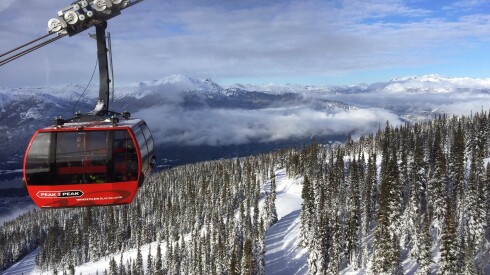I was introduced to our country’s national park system by the Harlem Renaissance writer Zora Neale Hurston. Captivated by her portrayals of rural Black life and of nature as both a source of beauty and a wellspring of hardship, I followed her trail to Everglades National Park in 2013.
Accompanied by my parents, I learned more about the landscape replete with mangroves and sawgrass marshes. Together, we marveled at the jewel-colored purple gallinules and watched alligators sunbathing along the banks. I dis- covered that, decades ago, such individuals as conservationist Marjory Stoneman Douglas were responsible for protecting these very flora and fauna from the interests of developers. This history sharpened how I thought about U.S. national parks, often touted as “America’s best idea,” a phrase first credited to writer and historian Wallace Stegner in 1983 and later popularized by filmmaker Ken Burns’s documentary miniseries of the same name.
Today, the National Park Service (NPS) encompasses 63 national parks and 433 other units, including battlefields, memorials, parkways, rivers, reserves, monuments, and wildlife refuges. In the years since that first trip, I’ve sought to explore the personal and transformative power of travel to the national parks. I caught the earliest sunrise in the United States atop Cadillac Mountain at Acadia National Park in Maine and spent a morning snowshoeing Hurricane Ridge in Washington’s Olympic National Park. But it wasn’t until a 2025 trip to Big Bend National Park that my thinking changed in a major way, again.
I rarely encountered other visitors in the park, which is hemmed in by the mountains of southwest Texas. It seemed that the land was mine to enjoy as I wished, away from crowds and the high-intensity thrum of civilization. But the fantasy has uncomfortable roots: I had to acknowledge that to create refuges for their own interests, white settlers had removed Indigenous people from their sacred spaces and homelands. All told, 90 million acres of tribal land were transferred to the national forest system between 1887 and 1934. I acknowledged that, in actuality, the story of America’s parks is multifaceted, with fraught threads of ownership, power, and exploitation.

The NPS has more than 109 costewardship agreements with tribes.
Illustration by Simone Noronha
In 2016, Congress passed the NATIVE Act to “enhance and integrate Native American tourism.” As of September 2024, the NPS has more than 109 costewardship agreements with tribes, including comanagement partnerships for Canyon de Chelly National Monument (Arizona), Glacier Bay National Park and Preserve (Alaska), Grand Portage National Monument (Minnesota), and Big Cypress National Preserve (Florida), sites that have long been of cultural and spiritual significance.
Last year, 125 acres of land were transferred from the NPS back to the California Yurok Tribe with a contract to build a new visitor center that highlights Indigenous history and serves as a gateway to Redwood National and State Parks. And in fall 2024, the Mandan, Hidatsa, and Arikara Nation opened the Three Affiliated Tribes National Park in North Dakota, joining the Red Cliff Band of Lake Superior Chippewa, who established Frog Bay Tribal National Park in Wisconsin in 2012—the first of its kind.
Every spring, I buy an $80 America the Beautiful Pass, because it allows me to recreate at national parks while also contributing to their maintenance and infrastructure. But before any visit, I prompt myself: How did this park come to be? Who are the original stewards of the land, and how are their descendants involved in its care today? The answers are helpful guides as I move through parks and ask questions, engage in conversation with my fellow travelers, and notice what’s mentioned—and what’s missing—in visitor centers.
My awareness of this history also informs the activities I choose to do. In a popular park like the Grand Canyon, for example, I spend much of my time away from the well-traveled trails and instead take in some of the Indigenous cultural programming offered at Desert View Watchtower. Where possible, I seek out Indigenous operators licensed to work in the parks, such as Blackfeet family–owned Sun Tours, which offers interpretive experiences in Montana’s Glacier National Park. Options for engaging with a more holistic version of history exist—we just have to look for them.
After all, if the national parks are America’s best idea, then adaptation is perhaps the country’s best trait. And just as my perception about the parks’ identity has evolved over the years, there’s space for the narrative around these spaces to change, too. One visit at a time.











